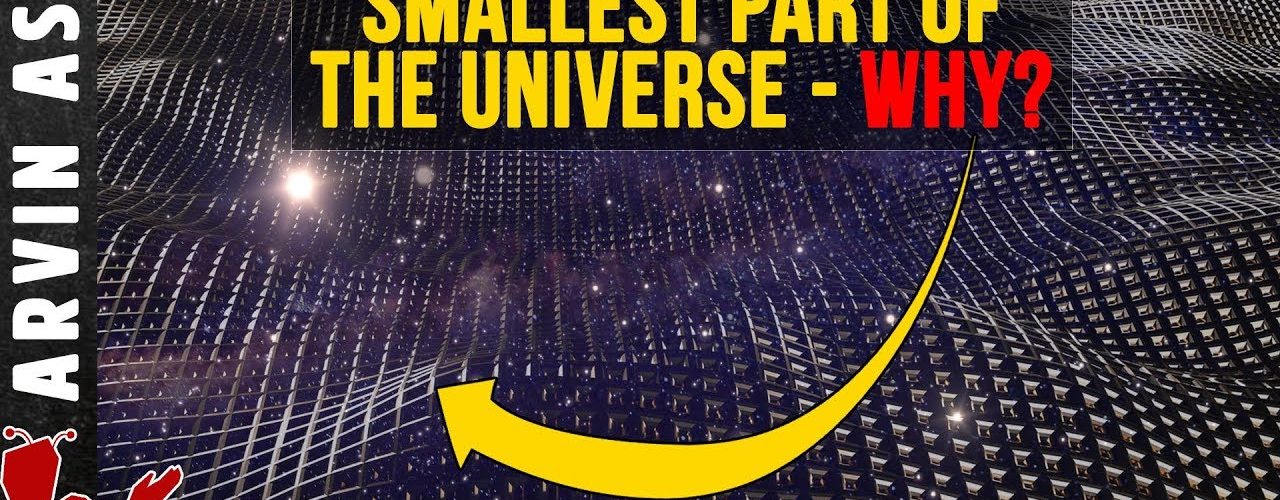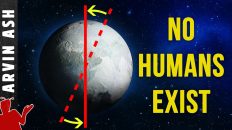Visualizing the smallest size in the universe – Planck Length & why you can’t go smaller
Visualizing Planck length – why is it the smallest in the universe?
The scale of the universe is incredibly difficult to imagine. Think of the biggest thing you can think of. A blue whale maybe? The great pyramids of Giza? The Burj Khalifa in Dubai? Mount Everest? That may be about as large as you can imagine. But the scale of the universe is many many orders of magnitude bigger than that. It’s much bigger than you can probably imagine.
And the crazy thing is that it is also smaller than you can ever imagine. Think of the smallest thing you can imagine, a bacteria maybe? An atom? Keep going…because the universe is many orders of magnitude smaller than that.
And that’s the problem. Most of us cannot grasp the scale of the universe because it is utterly unrelatable….to anything that we experience in our daily earthly lives.
For example, there are at least 10 sextillion stars – that’s 10 followed by 22 zeros. That’s thousands of times more than all the grains of sand on all the beaches of the earth.
But you’ve probably heard that before.
You may not have heard that the universe is even smaller than it is large. For example, the smallest length theorized to be possible, the plank length is about 1.6 X 10^-35 meters. This is so small that if an atom was the size of earth, a Planck length would be much much smaller than even the head of a pin. In fact a planck volume which is planck length cubed or about 4X10^-105 cubic meters is so small that there are more planck volumes inside a cubic meter than there are cubic meters in the known universe.
Let’s explore the scale of the universe using some genius animations created by Cary and Michael Huang, who have generously given us permission to use them. The link to their website is in the description below. And let’s do that right now!
Exactly how long is a planck length, and how can we visualize it? And exactly why is it the smallest length in the universe?
Let’s explore the scale of the universe using some genius animations created by Cary and Michael Huang, who have generously given us permission to use them. The link to their website is in the description below. And let’s do that right now!
Let’s start with the scale of a human being, because this is probably the most relatable scale we can think of. Just imagine things that are about the size of your body. Things like the giant earthworm that lives along streams in Australia. Or a big beachball, which can be found near oceans and beaches all across America.
We are looking at scales that are ten to the power zero, or 1 meter in length.
Now, lets go smaller by one order of magnitude, so now we are looking at things that are on the scale of about 10 centimeters. These are things like the shrew – which are some of the smallest mammals found on earth, or a chicken egg that you might have had for breakfast this morning.
Now we are going to move a bit faster, let’s go a thousand times smaller than the scale of a human being, on the order of 1 millimeter or one thousand of a meter. Here, you’ll find things like a grain of sand which can be about half a millimeter in length…or dust mites that maybe crawling all over your bed, because they love to eat dead skin cells. Yeah, if you itch in the morning. This could be the culprit. You can’t usually see them with the naked eye.
Let’s go 1000 times smaller than this scale. Now we are going a hundred times smaller than the width of a human hair. And ten times smaller than even bacteria. Here, we are going to find things like large viruses. Unlike bacteria, 99% of which are harmless to you. The vast majority of viruses will make you sick. And our antibiotics are totally ineffective against viruses.
Let’s keep going to 1000 times smaller this. This is nanometers, or one billionth of a meter. Now we are exploring a universe that we can’t see with optical telescopes. This is ten times smaller than DNA, the blueprint of all life on earth. This is on the scale of the size of molecules like the glucose molecule, that your body uses as its source of energy. And the scale of the biggest atom – cesium. Why is this atom so big even though it doesn’t have the most electrons? Because it has the best combination of a large valence shell, and a low nuclear charge, which allows its electrons to wander further away from the nucleus.
Let’s go 1000 times smaller than this. This is one trillionth of a meter. This is on the order of the wavelength of gamma rays. This is the highest energy electromagnetic radiation, consisting of the most energetic photons. Gamma rays are emitted during a nuclear explosion, and highly energetic cosmological phenomenon such as exploding stars just before they collapse into a black hole.
Let’s go 1000 times smaller than this. This is 1X 10^-15 or one quadrillionth of a meter. This is the size of particles that make up the nucleus of all atoms, protons and neutrons. The size of a typical atom is however is 100,000 times bigger than its nucleus. So if an atom was the size of Michigan Football stadium, the biggest stadium in the United States, the nucleus would be a marble sitting in the middle of the 50 yard line.
You would think that we are getting close to the smallest size theorized to exist – the plank length. But we are nowhere close. You have to go a quadrillion times smaller than one quadrillionth of a meter, or 1 X 10^-30 of meter….and you would still need to go another 100,000 times smaller than that, or 1 X 10^-35 meters. Then you would be at the plank length. In fact, if an atom was the size of the earth, a planck length would be smaller than the size of an atom – it would be about the size of a proton.
But What exactly is a Planck length and why is it the smallest length?
Planck length is actually derived from the fundamental constants of the universe that define the properties of space-time:
The speed of light – c which signifies the maximum speed of communication in the universe
The gravitational constant – G, which signifies the magnitude of gravitational force between two massive objects.
And the reduced Planck Constant – h bar, which links how much energy a photon carries depending on its electromagnetic frequency.
E=hv/2pie
These are really the only constants that define the fundamental properties of the universe and all its contents. By taking different combinations of these fundamental constants, you can come up with a length.
L(sub p)= Sq root (Gh/c^3) = sq root (length^3/mass * time^2 * mass * l^2/time / (l/t)^3 )
By taking different mathematical combinations of these constants, and reducing their units, you can get a length. By similar mathematical manipulation, you can also get planck time and planck energy.
But what does this length mean? Why is it significant?
It is the smallest length at which gravity would have an effect. It is the scale and size of the strings in string theory. It is also the scale at which space-time is theorized to become quantized in Loop quantum gravity theory.
So why is it the smallest length? In 1964, C Alden Mean determined that using the known laws of quantum mechanics and laws of gravitation, it is impossible to determine the position of an object to a precision smaller than the Planck length. So from what is currently known about quantum mechanics, a length smaller than the Planck length has no meaning.
Note that I said “known” laws. It is possible that at lengths smaller than the Planck scale, gravity or quantum mechanics behaves completely differently, that we may not yet know about…Since we don’t have a working theory of quantum gravity. This is quite possible. So until we find out what happens at such small scales, we will need to wait for a future Einstein to reveal this to us.
One of the remarkable things about planck length is that since it is derived from the fundamental constants of the universe, which by definition applies to everything, it will be the same no matter what language you might speak, what units you might use, or even what planet you might come from.
That’s right, if we ever come across aliens from another world and compare notes, we both will have the same length for the smallest length possible in the universe. So we have a common language already with those shy aliens that only seem to show up in fuzzy pictures in remote areas of the United States.
In part 2 of this video, we will explore the other end of the scale – how large the universe is, which by the way is much larger than you can imagine.







